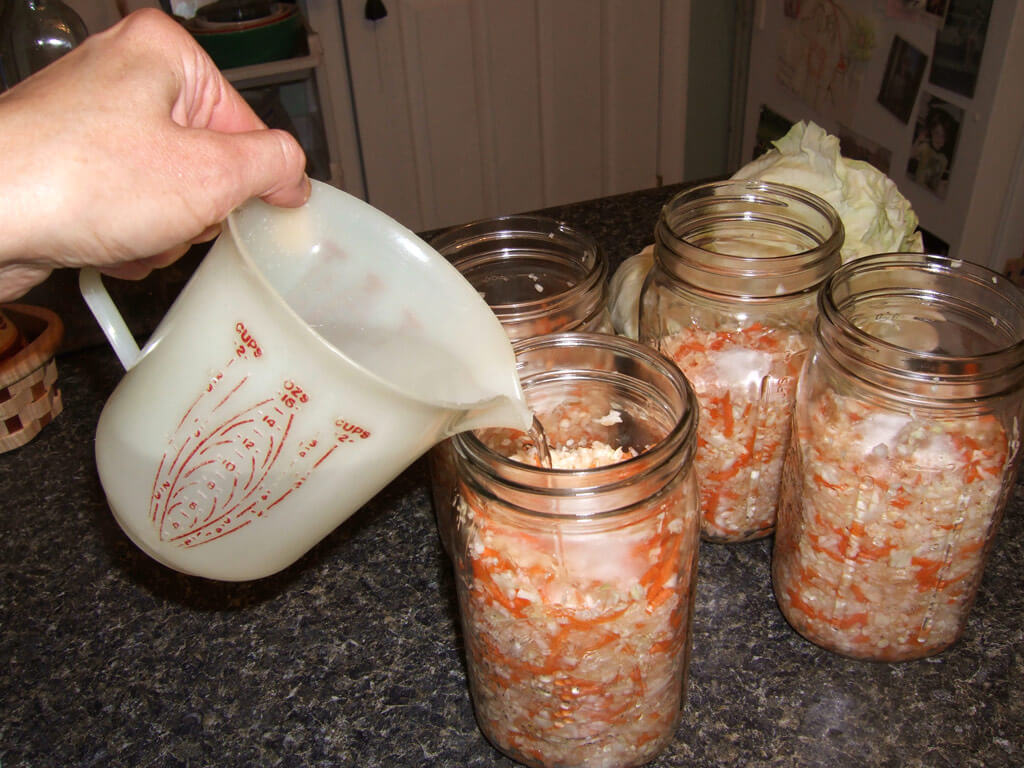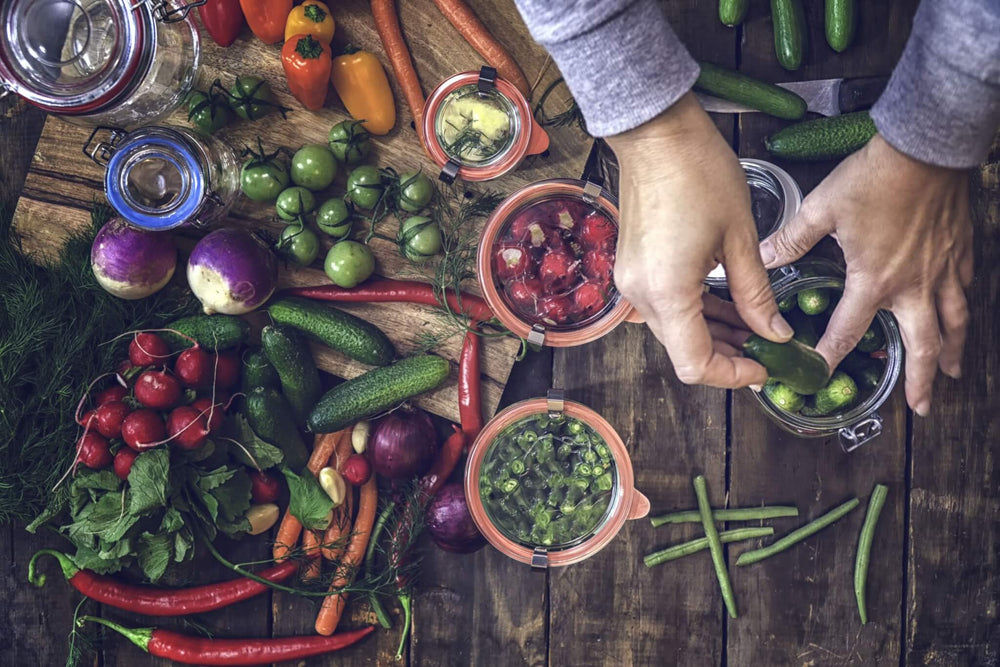Simply put, pickling is the practice of preserving food in a high-acid solution. The process involves adding vinegar and/or salt to vegetables to create the acidic solution vital for successful pickling. This is a simple, effective way to preserve your harvest. Read on for the basics on how to pickle vegetables from your garden.
What you can pickle
Many vegetables, including:
- cucumbers
- peppers
- artichokes
- beans
- cauliflower
- cabbage
tomatoes (both red and green)
- okra
- zucchini
- squash
- Brussels sprouts
- onions
- and fruits, including melons and melon rinds
Equipment you may need
- For brining: A glass, ceramic, or stainless steel bowl*.
- For dry salt pickling: 1-gallon crock made of glass, stoneware, or food-grade plastic.
- Canning jars, lids, and screw bands.
- Stainless steel pot for heating pickling liquids
- Boiling water canner (required to process some recipes).
* Avoid metal bowls or pots that aren't stainless steel, because salt and vinegar can react with other common metals (like aluminum, copper, or iron).


Pickling tips
Start with fresh, crisp produce. With pickling, the adage is: Crisp into the brine, crisp out of the brine. Start with mushy cucumbers and you'll wind up with mushy pickles.
Always remove a 1/16-inch slice from the blossom ends of cucumbers. This end contains an enzyme that softens pickles.
Use canning, pickling, or kosher salt. Avoid salt with iodide, such as table salt. Note that kosher salt can take longer to dissolve; you'll want to make sure it dissolves completely in the brine before adding to vegetables.
When brining, keep food submerged in the solution by placing a food-grade resealable bag filled with extra brine on top of the vegetables. Some gardeners place a plate on top of the vegetables and the brine bag on top of the plate.
Never change the proportions of vinegar to food to water in recipes.
Follow recipes carefully to avoid risk of food spoilage.

Basic pickling
Click through the slide show below for simple tutorial on how to make and process pickles using your favorite recipe. (This process can be followed for any of vegetables listed above, not just cucumbers.)
Processed pickled vegetables, which can be stored in a cupboard or other cool, dark place, taste best after an 8-week curing period. Refrigerator pickles, on the other hand, must be stored in the fridge and require a short fermenting period before eating.
Salt pickling
There are two methods of salt pickling: dry salt and brined. In the first, you combine vegetables with salt, which pulls liquid out of them. In the second, you create a solution of salt and water (and sometimes whey), then cover the vegetables with it. The vegetables remain fully submerged in the liquid for a specified time period, so no air enters while the vegetables ferment. Fermentation is how sauerkraut is made.
Vinegar pickling
In vinegar pickling, you soak vegetables in a brine solution of vinegar and salt to enhance crispness and flavor. After brining, food is drained and rinsed. Many recipes then call for cooking the vegetables in a vinegar and spice solution, packing them into jars, then covering them with the hot vinegar solution. Jars are then processed using the boiling water canning method.
Choose vinegar with 5 percent acidity, such as distilled white, cider, or white wine vinegar. Distilled white vinegar is a good choice for pickling pale vegetables such as cauliflower. (Cider vinegar will cause vegetables to darken slightly.)
Article by Julie Martens.





 Herbs
Herbs
 Vegetables
Vegetables
 Fruit
Fruit
 Flowers
Flowers
 Succulents
Succulents


